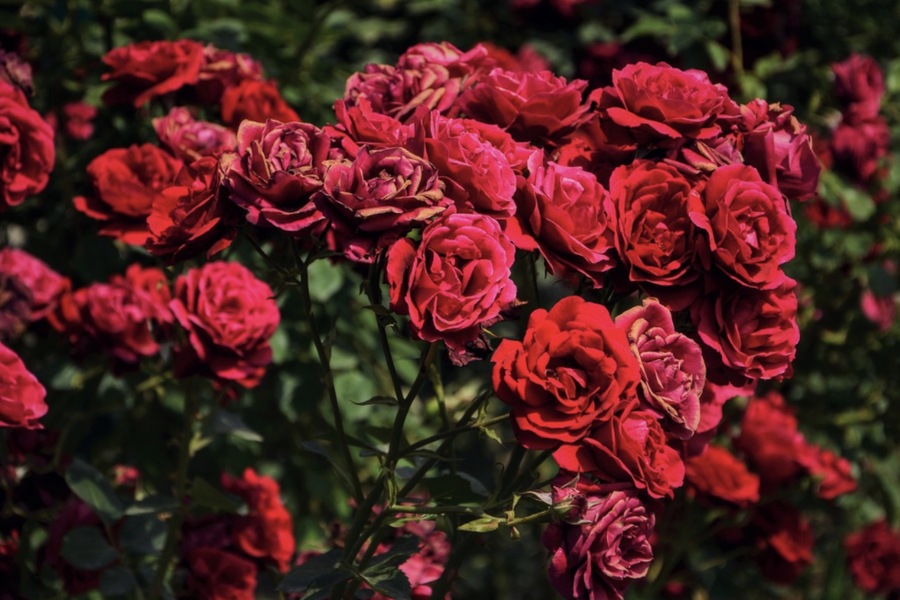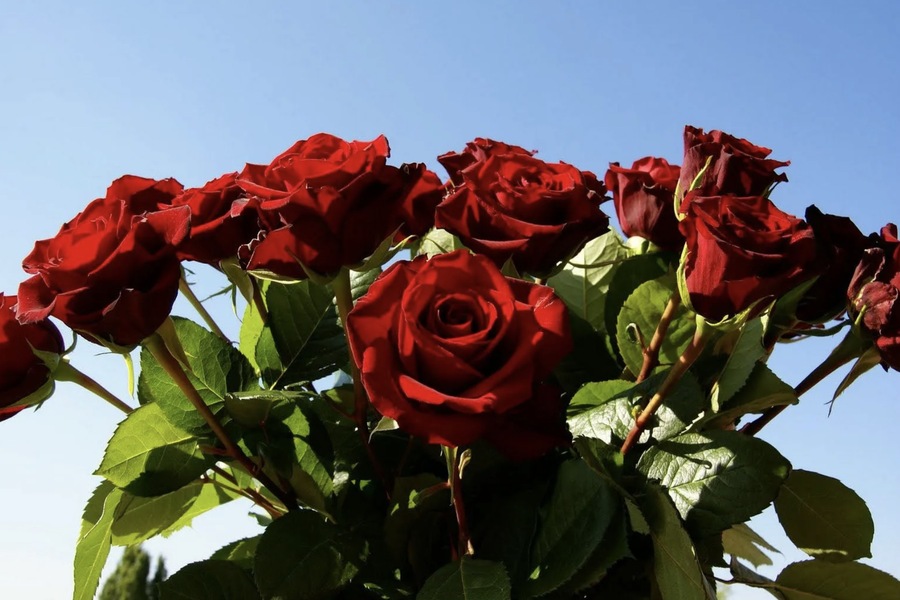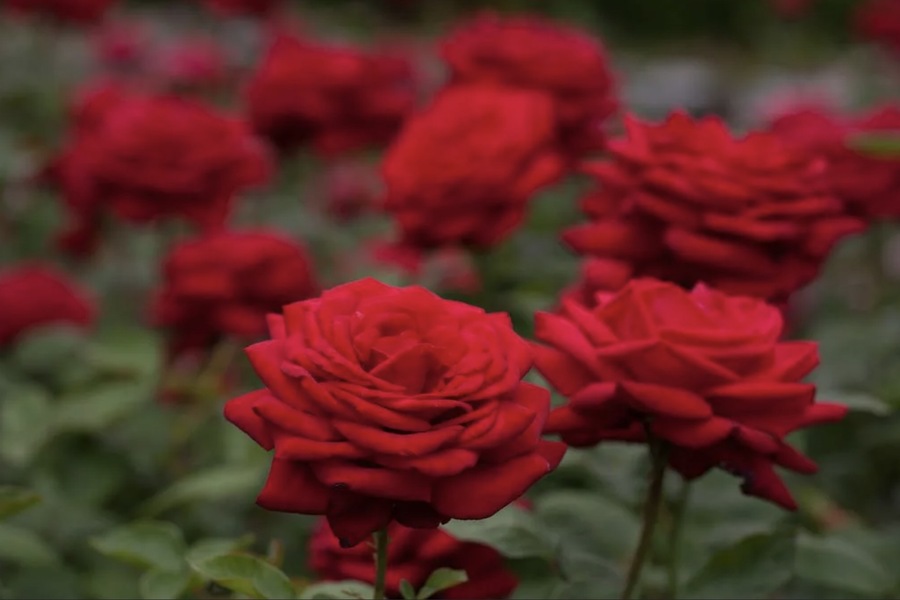The United Arab Emirates (UAE) is known for its hot desert climate, which presents significant challenges to the cultivation and availability of flowers, particularly red roses. While these blooms are a staple for events, holidays, and personal gifting, ensuring consistent quality and supply in such a harsh environment requires intricate logistical and agricultural solutions. This article explores the effects of the UAE’s climate on the quality and availability of red roses, examining factors such as temperature, water scarcity, and supply chain logistics.
The UAE’s Harsh Desert Climate and Its Impact on Flower Cultivation
The UAE’s climate is characterized by extremely hot summers, mild winters, and low annual rainfall. These climatic conditions are not naturally conducive to growing roses, which typically thrive in temperate environments with cooler temperatures and moderate rainfall. During the summer months, temperatures in the UAE can soar above 40°C (104°F), causing heat stress in flowers, including roses, if not properly protected. High heat can lead to wilting, shortened bloom life, and reduced color vibrancy in red roses, making it difficult for florists to maintain quality.
The Role of Controlled Environments in Rose Cultivation
Given the extreme temperatures, most red roses sold in the UAE are grown either in controlled environments within the region or imported from cooler climates. Local greenhouses play a key role in producing roses, as they offer a stable environment where temperature, humidity, and water usage can be managed efficiently. In such facilities, roses are protected from the direct impact of the desert heat, ensuring better quality blooms. However, the high cost of greenhouse production can affect the price and availability of red roses, especially during peak demand seasons like Valentine’s Day or National Day.
Water Scarcity and Its Effects on Flower Production
Water scarcity is another significant challenge in the UAE’s flower industry. The country relies heavily on desalinated water for its agricultural needs, as natural freshwater sources are limited. Roses, being a water-intensive crop, require consistent irrigation to thrive. The high cost of desalinated water and the need for efficient water management systems can limit large-scale rose cultivation in the UAE. This can impact the availability of red roses, particularly during periods of high demand or when there are disruptions in the water supply.

Import Reliance: The Main Source of Red Roses in the UAE
Given the natural limitations of growing roses in the UAE, the majority of red roses available in the country are imported. Key countries that supply roses to the UAE include Kenya, Ethiopia, and the Netherlands, where the cooler climates are ideal for rose cultivation. The quality of these imported roses is generally higher than those grown in local conditions, as the flowers are less prone to heat stress. However, the reliance on imports introduces several challenges, including fluctuating prices due to global supply chain issues, transportation delays, and import taxes.
Transportation and Handling: Keeping Roses Fresh in High Temperatures
Transporting roses to the UAE involves carefully managed logistics to preserve the quality of the flowers. Roses are typically shipped in refrigerated containers to maintain their freshness, as exposure to high temperatures during transit can lead to spoilage. Once in the UAE, maintaining the cold chain is critical. Florists like REN Gift and Flowers ensure that their roses are stored and handled in optimal conditions to prevent wilting and extend their shelf life. However, the added costs of cold chain management can lead to higher retail prices for consumers.
Seasonality and Market Demand for Red Roses
Seasonality plays a significant role in the availability of red roses in the UAE. While roses are in high demand throughout the year for events such as weddings, corporate functions, and national holidays, specific occasions like Valentine’s Day and International Women’s Day create a spike in demand. During these periods, importers often need to increase shipments to meet consumer expectations, leading to potential supply shortages and price hikes. Local florists must carefully manage their inventories to ensure they can meet demand without compromising on quality.
The Impact of Climate Change on Rose Availability
As climate change continues to affect global weather patterns, flower-growing regions around the world are experiencing shifts in temperature and precipitation levels. These changes can directly impact the production of red roses in key exporting countries like Kenya and Ethiopia. A decline in production due to adverse weather conditions can lead to a shortage of red roses in the UAE, further increasing prices and limiting availability. In response, the UAE may need to invest more in sustainable farming practices or diversify its import sources to ensure a stable supply.
Innovations in Flower Farming: Sustainable Solutions for the UAE
To mitigate the impact of climate and environmental challenges, some companies in the UAE are exploring innovative farming techniques. Vertical farming, hydroponics, and aeroponics are being adopted by local growers to increase flower production without relying heavily on traditional soil and water sources. These technologies allow for more efficient use of water and space, helping to reduce costs and environmental impact. Additionally, the use of artificial lighting and climate control in greenhouse farming can optimize growing conditions year-round, improving the quality and availability of red roses.
The Role of Florists in Ensuring Quality and Availability
Florists play a vital role in managing the quality and availability of red roses in the UAE. By maintaining strong relationships with suppliers, both local and international, florists are able to secure a consistent supply of high-quality roses even during peak demand periods. Moreover, their expertise in flower care, including proper storage and arrangement techniques, ensures that customers receive fresh, vibrant bouquets.

Future Outlook for Red Roses in the UAE
Looking ahead, the availability of red roses in the UAE will likely depend on a combination of technological advancements, sustainable farming practices, and continued reliance on imports. The country’s commitment to environmental sustainability, as outlined in its National Food Security Strategy, may drive further investments in water-efficient agricultural technologies, which could benefit the local flower industry. However, fluctuations in global supply chains and climate change remain key factors that will influence both the quality and availability of red roses in the future.
Conclusion
The UAE’s climate poses significant challenges to the quality and availability of red roses, but innovative solutions in flower farming, careful management of imports, and advanced logistics ensure that consumers can still enjoy these blooms year-round. While local production is limited due to high temperatures and water scarcity, the country’s reliance on imports and its growing adoption of sustainable farming techniques will continue to shape the future of the red rose market in the UAE.

Skier, father of 3, drummer, International Swiss style practitioner and RISD grad. Acting at the intersection of modernism and elegance to craft experiences that go beyond design.
